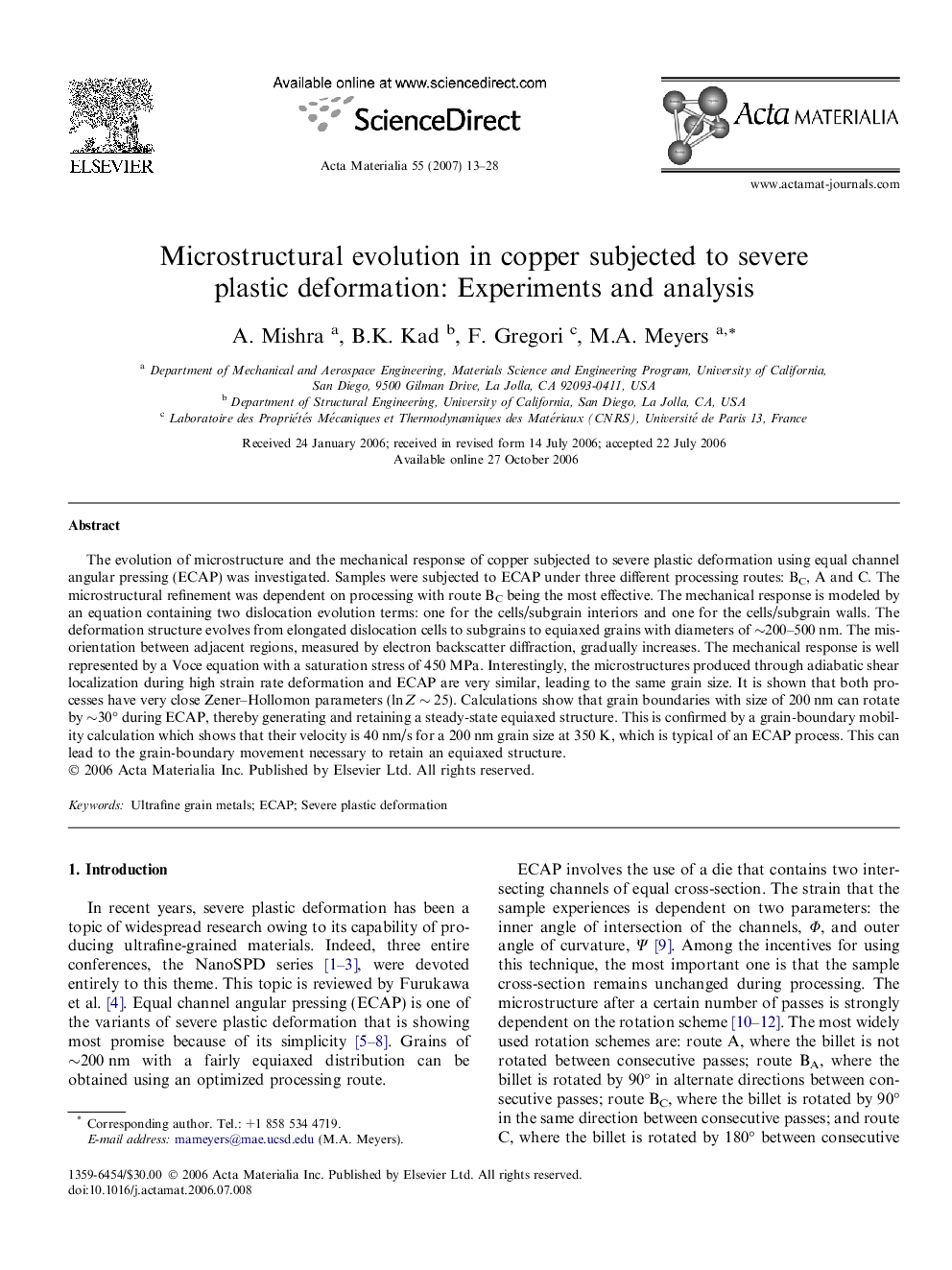| Article ID | Journal | Published Year | Pages | File Type |
|---|---|---|---|---|
| 1449886 | Acta Materialia | 2007 | 16 Pages |
The evolution of microstructure and the mechanical response of copper subjected to severe plastic deformation using equal channel angular pressing (ECAP) was investigated. Samples were subjected to ECAP under three different processing routes: BC, A and C. The microstructural refinement was dependent on processing with route BC being the most effective. The mechanical response is modeled by an equation containing two dislocation evolution terms: one for the cells/subgrain interiors and one for the cells/subgrain walls. The deformation structure evolves from elongated dislocation cells to subgrains to equiaxed grains with diameters of ∼200–500 nm. The misorientation between adjacent regions, measured by electron backscatter diffraction, gradually increases. The mechanical response is well represented by a Voce equation with a saturation stress of 450 MPa. Interestingly, the microstructures produced through adiabatic shear localization during high strain rate deformation and ECAP are very similar, leading to the same grain size. It is shown that both processes have very close Zener–Hollomon parameters (ln Z ∼ 25). Calculations show that grain boundaries with size of 200 nm can rotate by ∼30° during ECAP, thereby generating and retaining a steady-state equiaxed structure. This is confirmed by a grain-boundary mobility calculation which shows that their velocity is 40 nm/s for a 200 nm grain size at 350 K, which is typical of an ECAP process. This can lead to the grain-boundary movement necessary to retain an equiaxed structure.
